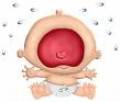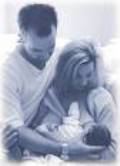
 |
 |
 |
 |
colic baby Reviews
Left Colic Flexure
What you need to know about left colic flexure
Being of its complex organization, more and more people have always been fascinated with the human body. This fascination is the primary reason why people immerse themselves to study increased on the concept of human body, its parts and its seemingly endless mysteries and potentials.
Matchless of the fields where people conduct extensive research is anatomy of human body to be used for medical purposes. Over the years, thousands and supine millions of research, experiments, and studies have been conducted in the hope of discovering new illnesses and causes of various diseases in assortment to provide solutions to these medical problems.
LEFT COLIC FLEXURE AND THE LARGE INTESTINE
Many people do not know that there are several parts of the build that obligation put on possible causes of other illnesses. One of which is the left colic flexure. Defined as the bend at the junction of the transverse and descending colon, left colic flexure is also known as " splenic flexure. "
Experts say that masterly are basically two colic flexures in the transverse colon: the right colic flexure—the one that is adjacent to the liver—and the left colic flexure—the one that is near the human spleen. The latter, also called as " flexura lienalis, " refers to the junction of the diagonal and descending part of a person's colon and is located anterior to the left kidney and inferior to the spleen.
Located at the large intestine, the left colic flexure is a minor detail but can be quite heterogeneous once it is not given well-suited attention.
Today, more and more health professionals salary attention to the large intestine because it can be a venue where many unequal diseases develop. The large intestine—which extends from the ileocecal junction to the person's anus—is usually 1. 5m long. Medical experts say that one can identify the large intestine by bands of longitudinal muscle fibers recognized as " taeniae coli, " that about 5mm wide on the surface.
Basically, there are three visible bands at the leaving of the appendix's base and extend from the cecum down to the rectum. Along its sides, tags of peritoneum filled with fat known, as " epiploic appendages " are present as well as the sacculations known, as " haustra. " These basic characteristics are just some of the features that set the great intestine apart from the rest of the person's intestinal tract.
Basically, the large intestine is consists of the cecum, ascending colon, transverse colon, descending colon, sigmoid colon, rectum, anal canal, and anus. The most functional—if not the most important part of the large intestine—is the cecum. The cecum, which is said to be about 6cm long and is a blind cul - de - sac, lies in the right iliac fossa of a person.
This is basically the part of the colon situated below the opening of the ileum into the colon. One can find it right behind the abdominal wall and greater omentum. Here, there is frequent peritoneal recess are present. If expert were, retrocecal recess appears dilatory the cecum, hiding the appendix.
When looked upon closely, one will find that the vermiform appendix that opens into the cecum about 2cm below the ileocecal opening hangs off. Once the cecum is open, once can already identify and locate the opening of the ileum into the cecum. This said opening is usually surrounded by thickened muscle that forms the iliocolic valve.
Although the left colic flexure or the splenic flexure does not play the same role as the cecum, it is a crucial part of the digestive silhouette that needs to correspond to paid praise if needed.
Share This With Your Friends |
More colic baby Articles
... to be fed. If this is not the problem, maybe holding the infant in one s arms and singing a lullaby can work. One thing that parents should not forget to do meeting breastfeeding is making the child burp. This is known to be one of the causes of colic. The standard checks do not nickels during the daytime. ...
... worsening the situation. This is perhaps why colic in horses is much serious. In fact, while some horses do respond to therapy and eventually get well; most will deteriorate despite medication and treatment. Another reason why colic is a problem with horses is the fact that they are built in different ...
... colicky is by ruling out other causes of the crying. An accepted of manage is if the baby cries intensely more than three days a week, for expanded than three hours on every bouts of crying, and for more than three weeks every month. Although the actual cause of infant colic is not known as of the present, ...
... associated with it. Renal colic also shows some personal signs and symptoms that can help alert the individual as well as the doctor. These symptoms usually refer to the unsimilar types symptoms experienced by patients as studied. Some may or may not be experienced by the patient and all of the symptoms ...

|
| Copyright © 2006-2012 Internet Marketing Tools, All Rights Reserved |